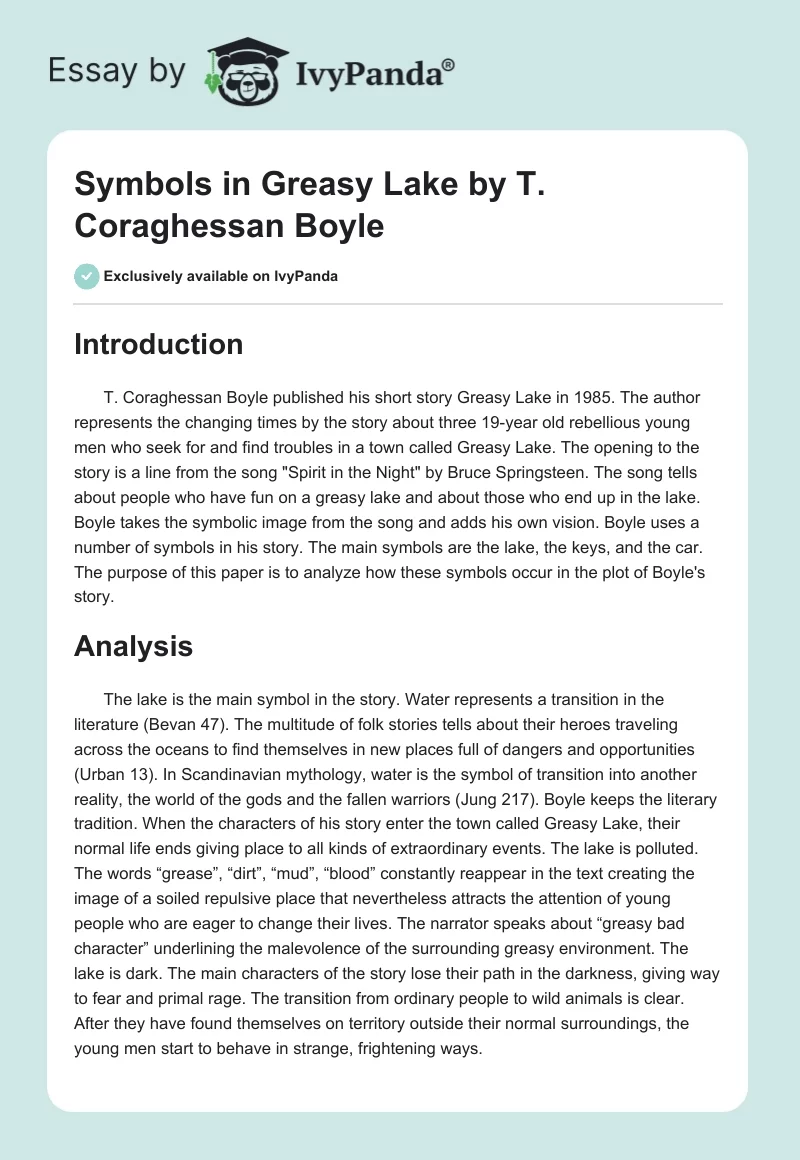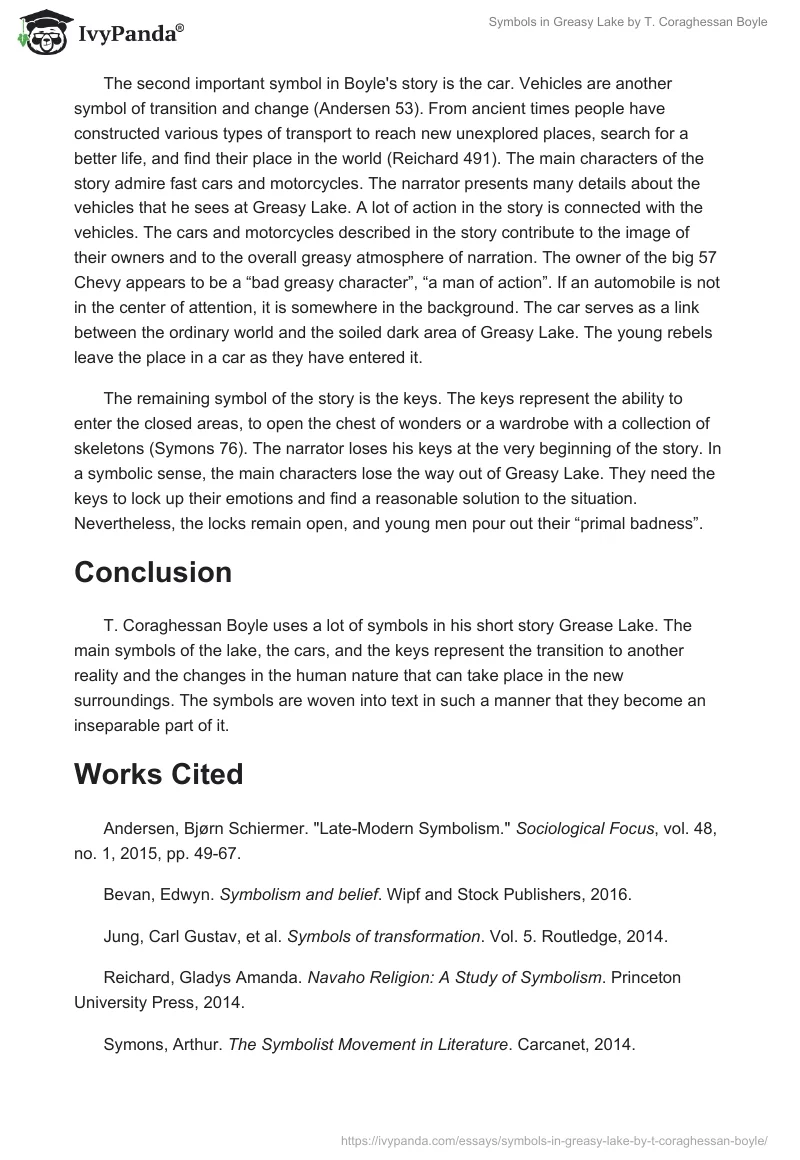Introduction
T. Coraghessan Boyle published his short story Greasy Lake in 1985. The author represents the changing times by the story about three 19-year old rebellious young men who seek for and find troubles in a town called Greasy Lake. The opening to the story is a line from the song “Spirit in the Night” by Bruce Springsteen. The song tells about people who have fun on a greasy lake and about those who end up in the lake. Boyle takes the symbolic image from the song and adds his own vision. Boyle uses a number of symbols in his story. The main symbols are the lake, the keys, and the car. The purpose of this paper is to analyze how these symbols occur in the plot of Boyle’s story.
Analysis
The lake is the main symbol in the story. Water represents a transition in the literature (Bevan 47). The multitude of folk stories tells about their heroes traveling across the oceans to find themselves in new places full of dangers and opportunities (Urban 13). In Scandinavian mythology, water is the symbol of transition into another reality, the world of the gods and the fallen warriors (Jung 217). Boyle keeps the literary tradition. When the characters of his story enter the town called Greasy Lake, their normal life ends giving place to all kinds of extraordinary events. The lake is polluted. The words “grease”, “dirt”, “mud”, “blood” constantly reappear in the text creating the image of a soiled repulsive place that nevertheless attracts the attention of young people who are eager to change their lives. The narrator speaks about “greasy bad character” underlining the malevolence of the surrounding greasy environment. The lake is dark. The main characters of the story lose their path in the darkness, giving way to fear and primal rage. The transition from ordinary people to wild animals is clear. After they have found themselves on territory outside their normal surroundings, the young men start to behave in strange, frightening ways.
The second important symbol in Boyle’s story is the car. Vehicles are another symbol of transition and change (Andersen 53). From ancient times people have constructed various types of transport to reach new unexplored places, search for a better life, and find their place in the world (Reichard 491). The main characters of the story admire fast cars and motorcycles. The narrator presents many details about the vehicles that he sees at Greasy Lake. A lot of action in the story is connected with the vehicles. The cars and motorcycles described in the story contribute to the image of their owners and to the overall greasy atmosphere of narration. The owner of the big 57 Chevy appears to be a “bad greasy character”, “a man of action”. If an automobile is not in the center of attention, it is somewhere in the background. The car serves as a link between the ordinary world and the soiled dark area of Greasy Lake. The young rebels leave the place in a car as they have entered it.
The remaining symbol of the story is the keys. The keys represent the ability to enter the closed areas, to open the chest of wonders or a wardrobe with a collection of skeletons (Symons 76). The narrator loses his keys at the very beginning of the story. In a symbolic sense, the main characters lose the way out of Greasy Lake. They need the keys to lock up their emotions and find a reasonable solution to the situation. Nevertheless, the locks remain open, and young men pour out their “primal badness”.
Conclusion
T. Coraghessan Boyle uses a lot of symbols in his short story Grease Lake. The main symbols of the lake, the cars, and the keys represent the transition to another reality and the changes in the human nature that can take place in the new surroundings. The symbols are woven into text in such a manner that they become an inseparable part of it.
Works Cited
Andersen, Bjørn Schiermer. “Late-Modern Symbolism.” Sociological Focus, vol. 48, no. 1, 2015, pp. 49-67.
Bevan, Edwyn. Symbolism and belief. Wipf and Stock Publishers, 2016.
Jung, Carl Gustav, et al. Symbols of transformation. Vol. 5. Routledge, 2014.
Reichard, Gladys Amanda. Navaho Religion: A Study of Symbolism. Princeton University Press, 2014.
Symons, Arthur. The Symbolist Movement in Literature. Carcanet, 2014.
Urban, Wilbur Marshall. Language and Reality: The Philosophy of Language and the Principles of Symbolism. Vol. 69. Routledge, 2014.


